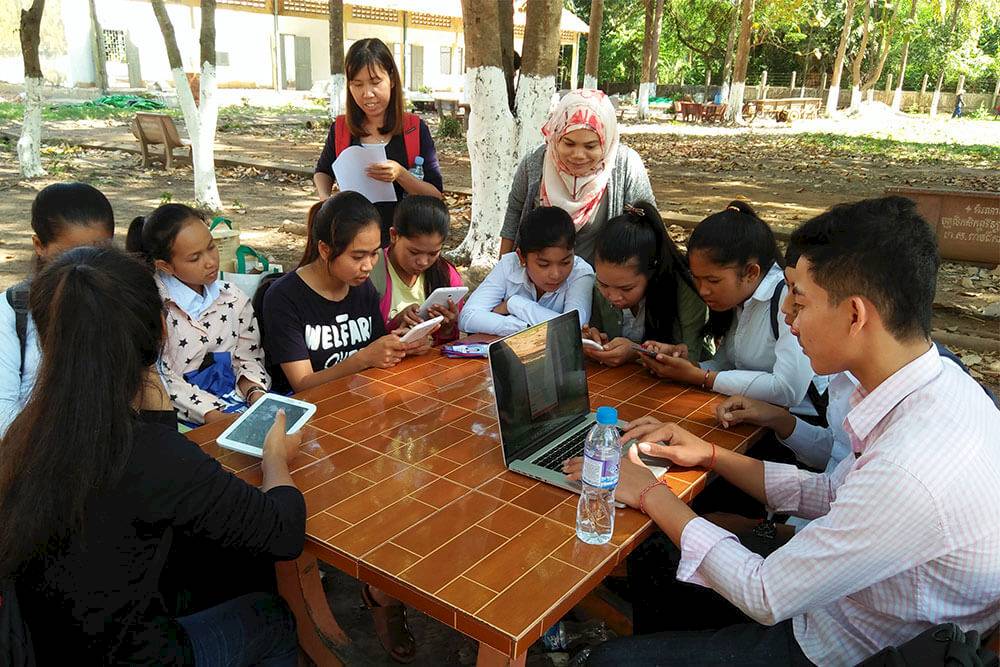
A (Brilliant) case study: How do you turn a big, bold, potentially game-changing idea into a reality?
InSTEDD is a small nonprofit founded with an ambitious vision: to create a global alarm system for pandemics. Twelve years in, it’s driving toward its mission — by instinctively following Brightline’s 10 Guiding Principles.
By TED + Brightline
In 1975, Dr. Larry Brilliant stood on a boat in Bangladesh, waving goodbye to a 3-year-old girl who had just survived a terrible disease. Her recovery was notable not just for her and her family — hers was the last case of killer smallpox in the world. Thanks to a World Health Organization (WHO) campaign that went door-to-door to identify cases early, they had put an end to a disease that killed 400 million people in the 20th century alone.
In the years since, Brilliant has made it his life’s work to stop pandemic diseases before they start. He co-founded the Seva Foundation to look at the epidemiological underpinnings of blindness, he consulted on the WHO’s campaign to eradicate polio, and he used his insights on bird flu and SARS to shape the film Contagion. So, in 2006, when Brilliant was awarded the TED Prize — and was given $100,000 and the resources of the TED community to launch a wish for the world — he knew exactly what he wanted to do. He wanted to leverage technology to help.
My TED wish is for you to help build a global early-warning system to protect us against humanity’s worst nightmares.
Dr. Larry Brilliant
“My TED wish is based on the common denominator of these experiences. It is so obvious that our only way of dealing with new diseases is to find them early and to kill them before they spread,” he said onstage at TED2006. “My TED wish is for you to help build a global early-warning system to protect us against humanity’s worst nightmares.”
With the prize, Brilliant founded InSTEDD. His initial vision was that it would be a large control room — epidemiology’s version of NASA’s Johnson Space Center — a technology powerhouse, filled with screens updating in real time to monitor outbreaks around the world. “The original idea was that there’d be a top-down, centralized organization that would send people out into the field,” says Brilliant. “What we forgot is that there are people [already] living in the field.”
Twelve years later, InSTEDD is a successful organization making good on its mission. It has created technology that helped Cambodia revolutionize its disease reporting system, that showed government officials in Rwanda, Ethiopia and Tanzania where to build new health centers, that even helped locate people trapped in buildings during the earthquake in Haiti. And yet, InSTEDD’s operating model looks very different than what Brilliant initially imagined. Instead of one top-down control room, it uses a system of local iLabs and workshops that focus on human-centered design and empower local leaders to build the tech tools that will work in their local context to surface potential outbreaks. These tools can then be adapted to work in other countries too.
“When I gave that TED Talk in 2006,” says Brilliant, “it was taking the world six months to find the first case of a virus that jumped from animal to human. Today that’s down to two or three weeks, because of InSTEDD. InSTEDD has become the intelligence inside of all these different surveillance systems.” InSTEDD’s team didn’t have a map to help them find their way. What they did have was their instincts. Without even realizing it, InSTEDD’s team followed Brightline’s 10 Guiding Principles for bridging the gap between strategy design and delivery. Just imagine what might happen if you followed them more purposefully. Here’s a closer look at how they did it — an inspiration to help anyone rise to whatever challenge they face turning ideas into reality.
Published on 1 April 2019, by TED
